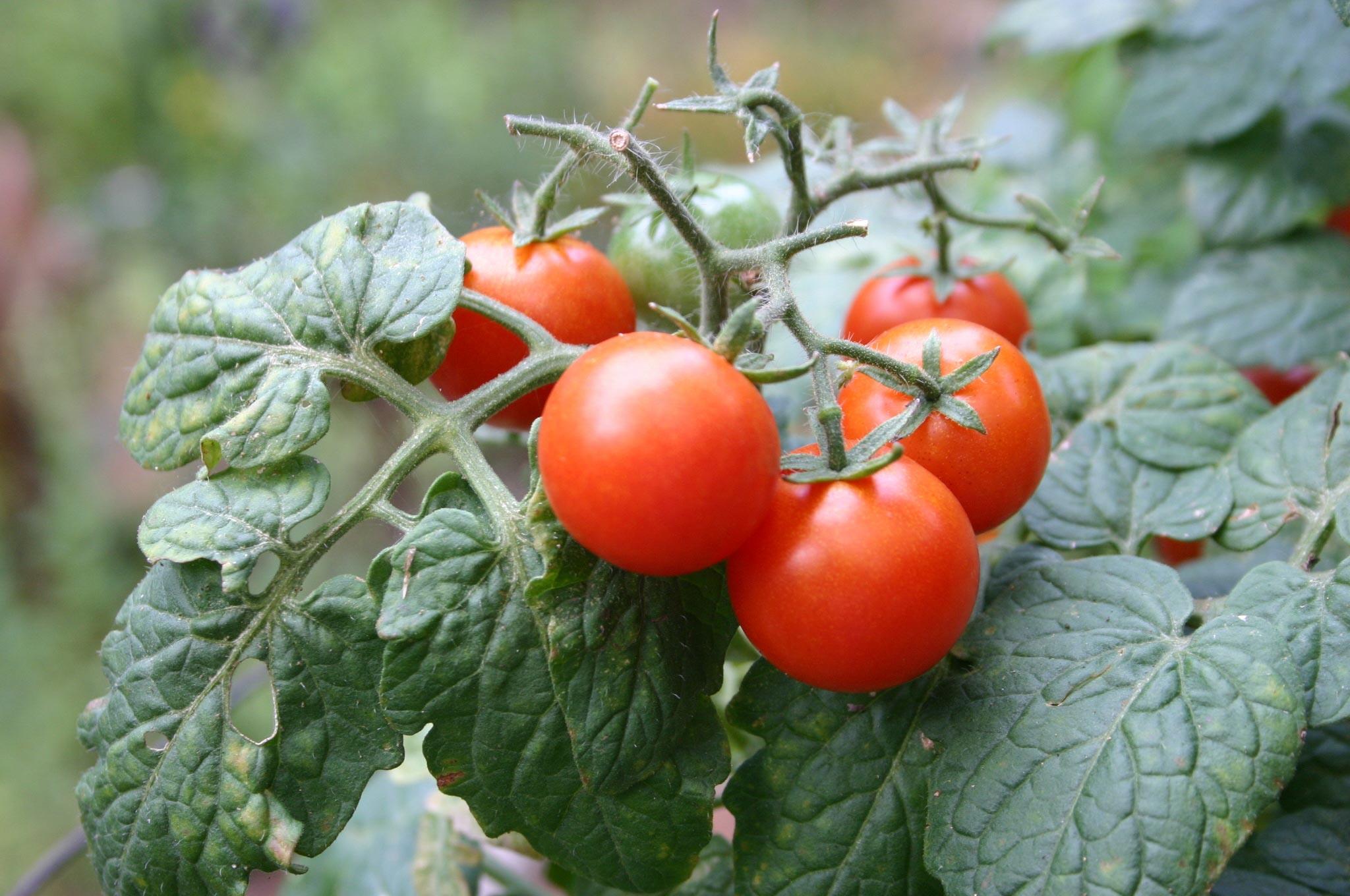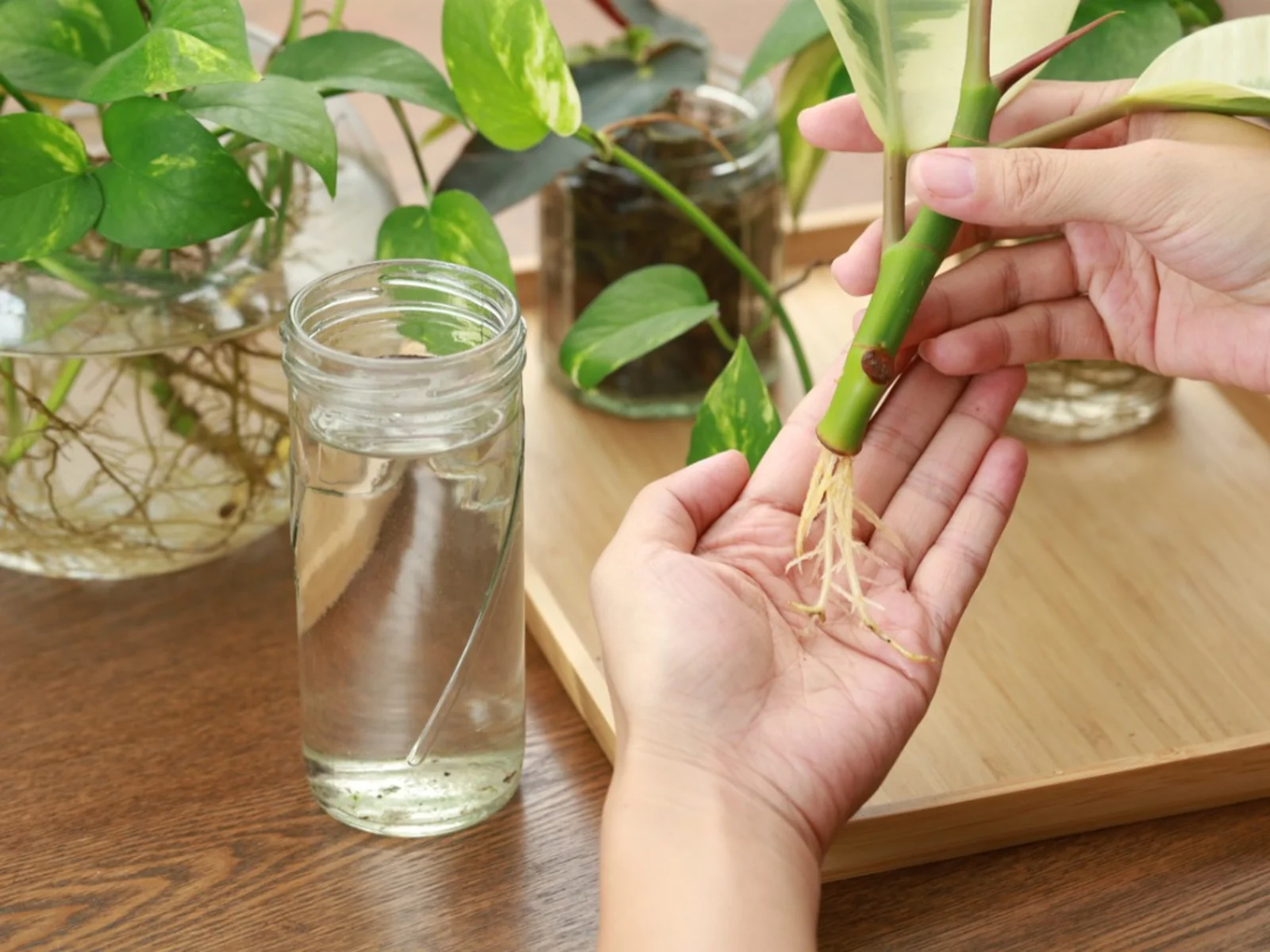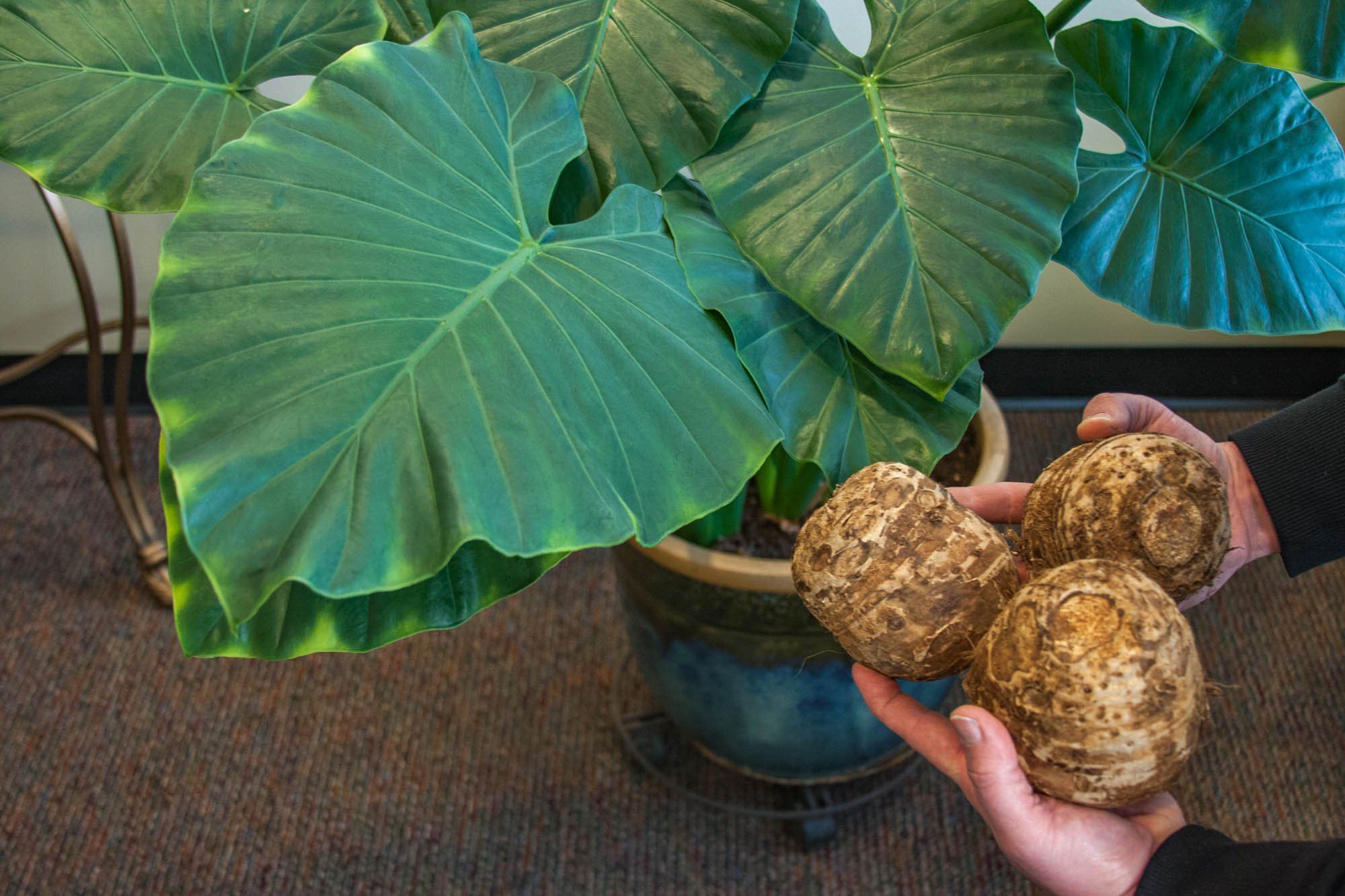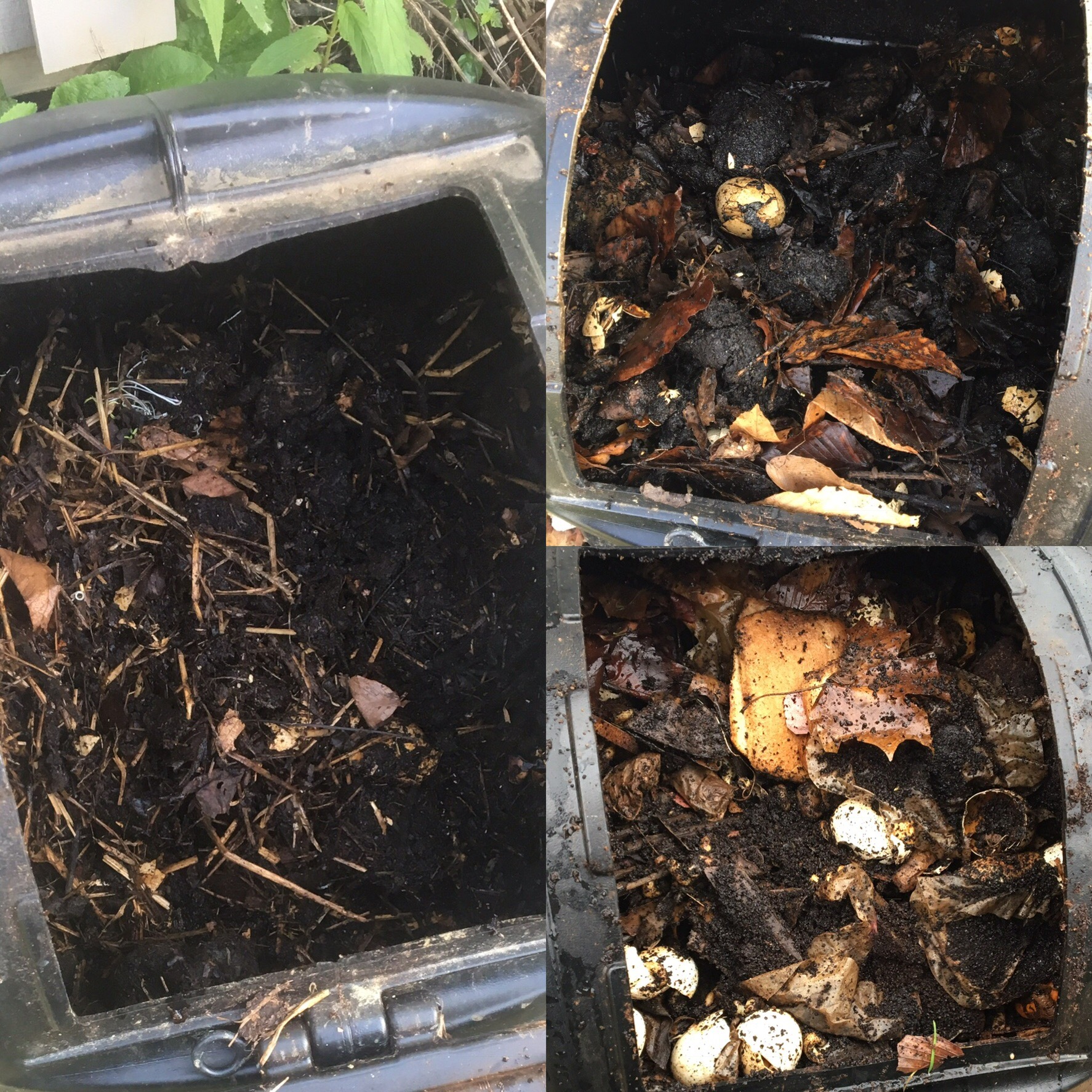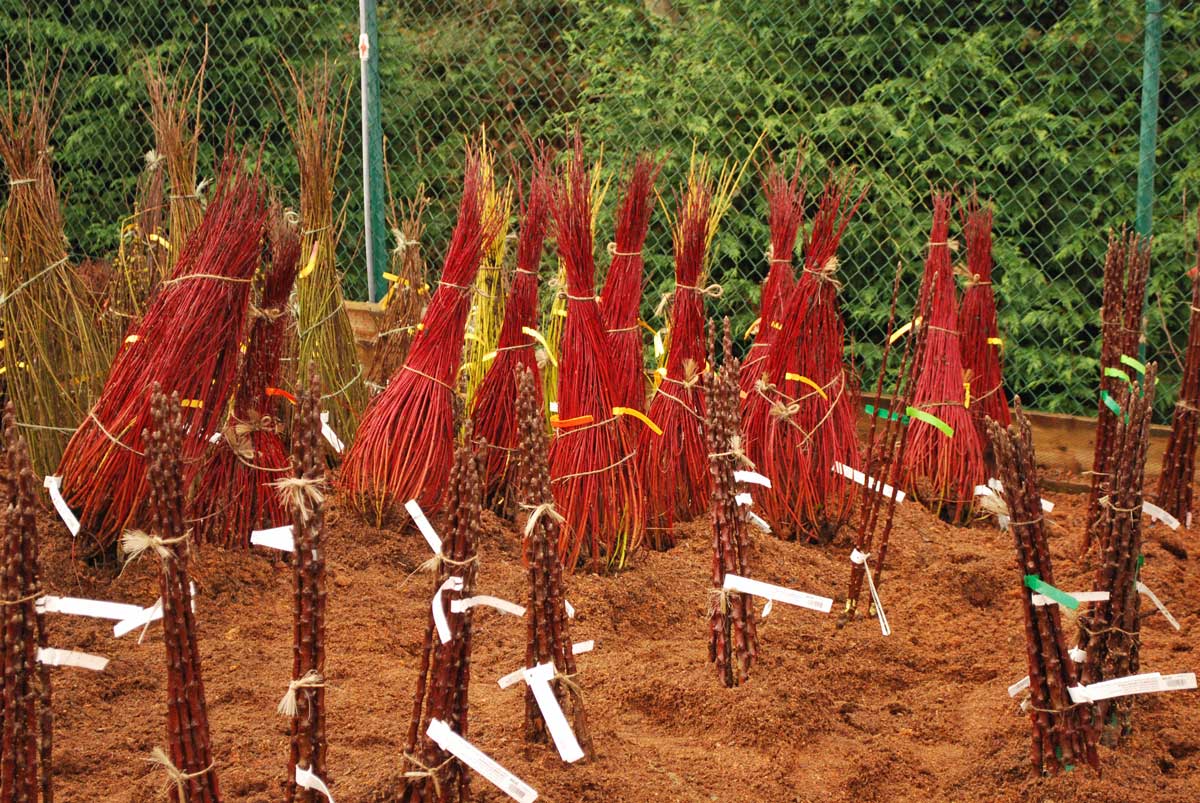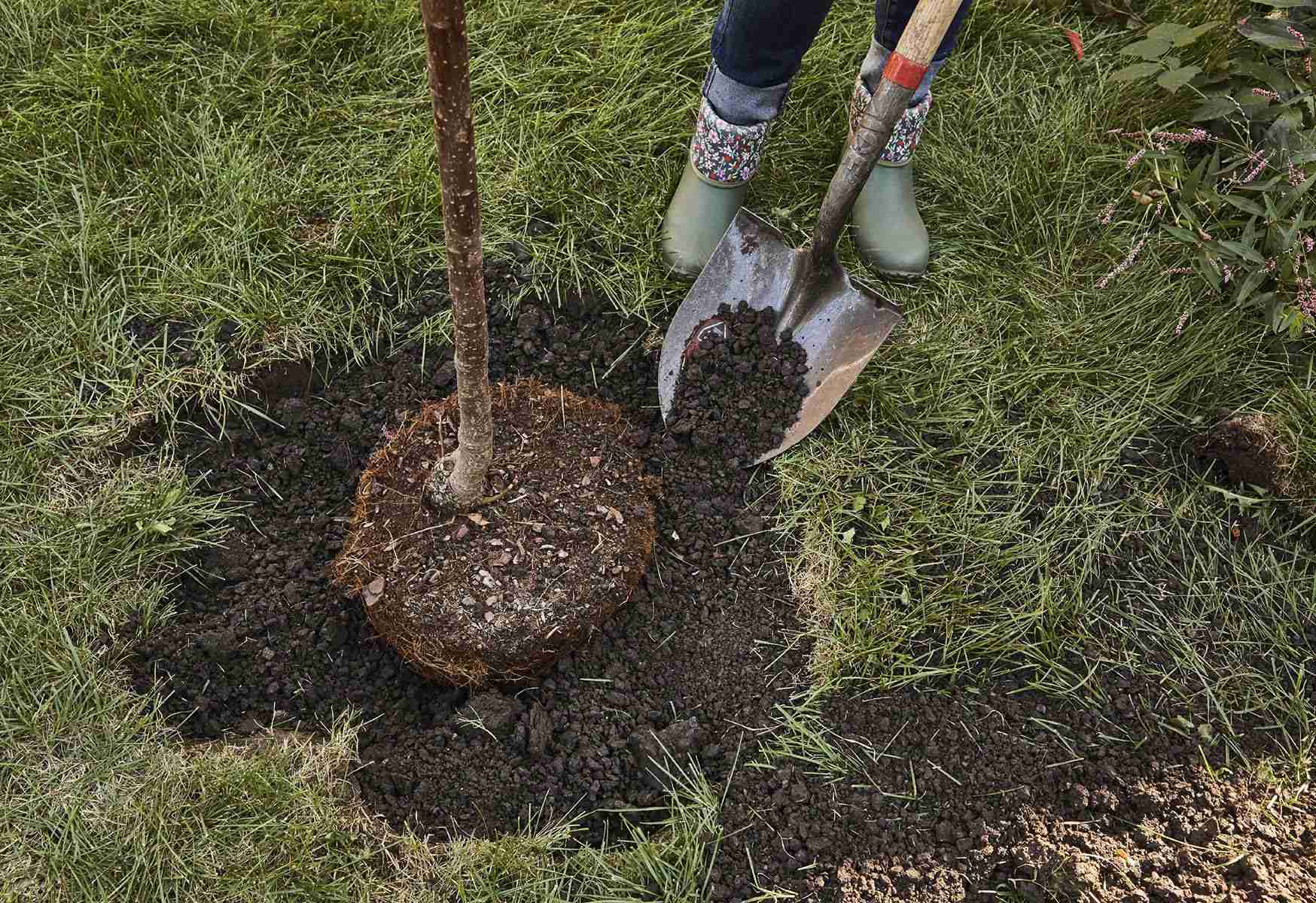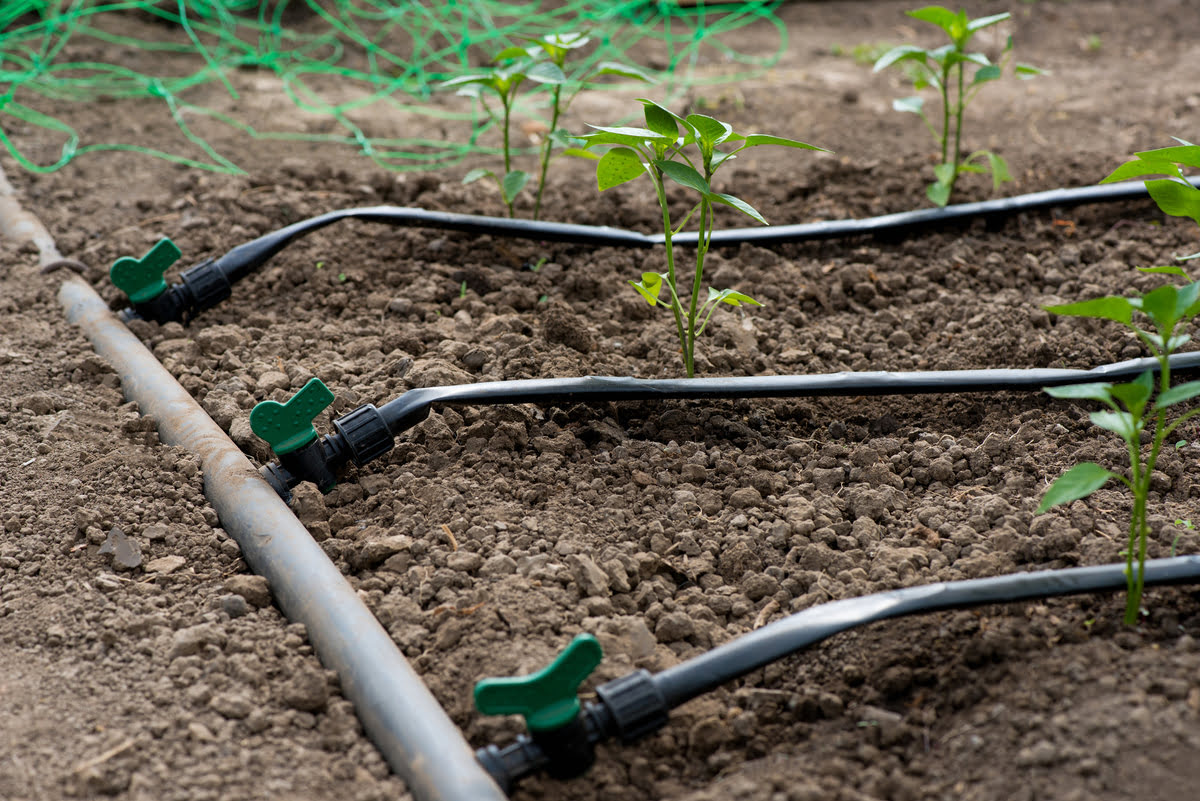Home>Gardening Basics>Getting Started>Why You Should Break Up Roots When Planting
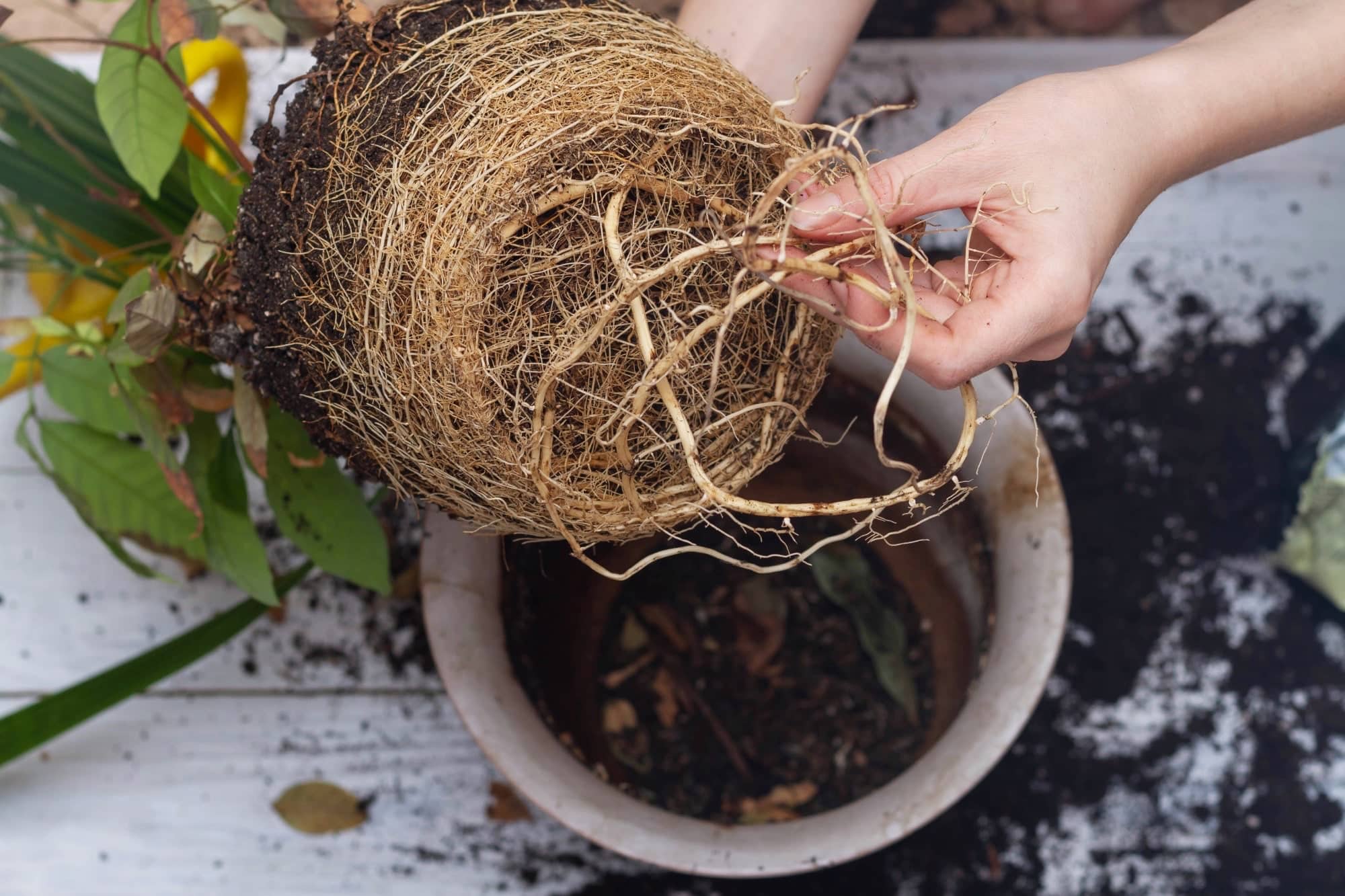

Getting Started
Why You Should Break Up Roots When Planting
Modified: January 22, 2024
Learn the importance of breaking up roots when planting and get started on the right foot with our expert tips and advice.
(Many of the links in this article redirect to a specific reviewed product. Your purchase of these products through affiliate links helps to generate commission for Chicagolandgardening.com, at no extra cost. Learn more)
Table of Contents
Introduction
When it comes to planting, one important step that often gets overlooked is breaking up the roots of the plant before putting it into the ground. This simple but crucial act can significantly impact the success and health of your plants. Whether you are planting flowers in your garden or starting a new vegetable patch, taking the time to break up the roots will promote better nutrient absorption, encourage root growth, and prevent root-bound plants.
In this article, we will explore the importance of breaking up roots when planting and the numerous benefits it provides. We will also discuss the optimal times to break up roots, the tools you’ll need, and provide a step-by-step guide to help you through the process. By following these tips and techniques, you’ll ensure your plants have the best start possible, leading to vibrant, thriving, and productive gardens.
So, let’s dive in and discover why breaking up roots when planting is a crucial step for successful gardening.
Importance of Breaking Up Roots When Planting
Breaking up the roots when planting is of utmost importance for several reasons. When plants are grown in pots or containers before being transplanted into the ground, their roots often become circling or bound up in a tight mass. If left unattended, these roots can continue to grow in a constricted pattern, leading to a host of problems down the line.
First and foremost, breaking up the roots allows for better nutrient absorption. When the roots are tightly packed, they cannot access the surrounding soil easily, making it difficult for them to take in essential nutrients and water. By loosening the roots, you create space for them to spread out and establish connections with the soil, ensuring efficient nutrient uptake.
Another vital reason to break up roots is to encourage healthy root growth. When the root system is constricted, it can inhibit the plant’s ability to develop a strong and expansive root network. Breaking up the roots at the time of planting stimulates new root growth, enabling the plant to establish itself more effectively in its new environment. A well-developed root system is crucial for providing stability, anchoring the plant in place, and absorbing water and nutrients from the soil.
Furthermore, breaking up the roots helps prevent plants from becoming root-bound. When a plant becomes root-bound, its roots grow in tight circles around the interior of the container, inhibiting their ability to expand outward. This condition can lead to stunted growth, reduced vigor, and ultimately, the plant’s decline. By breaking up the roots before planting, you ensure that they have room to spread out and grow, promoting healthier and more robust plants.
In addition to these benefits, breaking up roots also improves the aeration of the soil around the root ball. When the roots are tightly packed, it restricts the airflow, which can lead to a lack of oxygen in the soil. By loosening the roots, you create channels for air to reach the root zone, facilitating respiration and supporting overall plant health.
Overall, breaking up roots when planting is vital for optimal plant growth and development. It enhances nutrient absorption, promotes healthy root growth, prevents root-bound plants, and improves soil aeration. By taking the time to break up the roots, you set your plants up for success and provide them with a solid foundation to thrive in their new environment.
Benefits of Breaking Up Roots
Breaking up the roots when planting offers numerous benefits that contribute to the overall health and vitality of your plants. Let’s explore some of the key advantages:
1. Enhanced Nutrient Absorption: Breaking up the roots allows them to spread out and establish connections with the surrounding soil, providing better access to essential nutrients. This leads to improved nutrient uptake, ensuring your plants receive the nourishment they need to thrive.
2. Stimulated Root Growth: Breaking up the roots at the time of planting stimulates the growth of new roots, which helps the plant establish itself more effectively in its new environment. A robust and extensive root system supports the plant’s overall health and stability.
3. Prevention of Root-Bound Plants: By loosening the roots, you prevent the plant from becoming root-bound, a condition where the roots grow in tight circles around the interior of the container or root ball. This allows the plant to develop a more extensive root network, leading to healthier and more vigorous growth.
4. Improved Soil Aeration: Breaking up the roots creates gaps in the soil, promoting better airflow and oxygenation. This supports root respiration, enabling the plant to function optimally and reducing the risk of suffocation or root rot.
5. Increased Water Absorption: When roots are tightly packed, they may struggle to absorb water efficiently. Breaking up the roots helps create space for water to penetrate the soil and be readily taken up by the roots, ensuring proper hydration for your plants.
6. Reduced Transplant Shock: Breaking up the roots before transplanting helps minimize transplant shock, a common issue when moving plants from pots or containers to the ground. By loosening the roots, you lessen the disruption to the plant’s root system, allowing for a smoother transition and faster recovery.
7. Enhanced Overall Plant Health: By providing the necessary conditions for improved nutrient absorption, root growth, and water uptake, breaking up the roots contributes to the overall health and vitality of your plants. Healthy roots lead to healthier plants, less susceptibility to diseases, and better resistance to environmental stresses.
By understanding and harnessing the benefits of breaking up roots when planting, you can significantly improve the success rate and productivity of your garden. It is a small but impactful step that can make a world of difference in the long-term health and happiness of your plants.
When to Break Up Roots
Knowing the optimal time to break up roots when planting is essential to ensure the success of your plants. While the specific timing can vary depending on the type of plant and its growth stage, there are a few general guidelines to follow.
1. During Transplanting: The ideal time to break up roots is when you are transplanting a plant from a pot or container into the ground. Before placing the plant in its new location, gently loosen the root ball by breaking up the outer layer of the roots. This will help the roots spread out and establish in the surrounding soil more effectively.
2. Prior to Planting Bare-Root Plants: If you are planting bare-root plants, which are plants that have been grown without soil around their roots, it is crucial to break up the roots before planting. Gently untangle and spread out the roots to encourage proper growth and establishment.
3. Before Planting Root-Bound Plants: If you have purchased a plant that is showing signs of being root-bound, such as roots tightly circling the pot or container, it is crucial to break up the roots before planting. Gently loosen the roots, untangling them, and spreading them out to prevent further constriction and promote healthy growth.
4. Avoid Breaking Up Dormant Plants: It is essential to note that breaking up roots should be avoided in plants that are dormant or in their dormant season. Breaking up roots during this period can cause unnecessary stress and may hinder the plant’s ability to enter and maintain its dormant state effectively.
5. Consider Plant-Specific Guidelines: Different plants have specific preferences and requirements when it comes to breaking up their roots. Some plants, such as root vegetables like carrots or beets, are more sensitive to root disturbance and may not benefit from extensive root manipulation. Research the specific needs of each plant species before attempting to break up their roots.
Remember that while breaking up roots is generally beneficial, it should be done with caution and a gentle touch. Avoid excessive force or rough handling, as this can damage the delicate root system. It’s always better to be cautious and patient when working with plant roots.
By following these guidelines and considering the individual needs of your plants, you can determine the appropriate timing for breaking up roots. This will ensure optimal root growth, nutrient absorption, and overall plant health.
Tools Needed for Breaking Up Roots
Breaking up roots when planting requires the use of specific tools to ensure a gentle and effective process. Here are some essential tools you may need:
1. Hand Trowel: A hand trowel is a small, handheld tool with a curved blade that is perfect for loosening and breaking up compacted soil around the root ball. It allows you to work close to the plant without causing excessive damage to the delicate root system.
2. Garden Fork: A garden fork is a larger tool with sturdy, pointed tines that can be used to loosen and aerate the soil. You can use the fork to gently lift and separate the roots from the surrounding soil, ensuring proper airflow and preventing root binding.
3. Root Pruning Shears: Root pruning shears are specialized pruning tools designed specifically for cutting through plant roots. These shears have sharper and more robust blades compared to regular pruning shears, allowing you to trim or remove any large, tangled, or damaged roots when necessary.
4. Soil Knife: A soil knife, also known as a hori-hori knife, is a versatile tool that can be used for various gardening tasks, including breaking up roots. Its sharp blade and serrated edge make it ideal for cutting through compacted soil and gently separating tangled roots.
5. Garden Gloves: While not a tool in the traditional sense, a good pair of sturdy garden gloves is a must-have when working with plant roots. They protect your hands from scratches, blisters, and any potential irritation that may occur while handling soil and plant roots.
6. Watering Can or Hose: Before and after breaking up roots, it is essential to thoroughly water the plant. This helps to hydrate the roots and the surrounding soil, making it easier to work with and reducing the stress on the plant.
7. Bucket or Container: It can be useful to have a bucket or container nearby to collect any removed roots or excess soil. This keeps your work area organized and makes cleanup more manageable once you have finished breaking up the roots.
Remember to clean and sanitize your tools before and after each use to prevent the spread of diseases and infections between plants.
Having these tools on hand will make the process of breaking up roots easier and more efficient. They will enable you to work with precision and care, ensuring that your plants have the best start possible in their new environment.
Step-by-Step Guide to Breaking Up Roots When Planting
Breaking up roots when planting is a straightforward process that can greatly benefit the health and growth of your plants. Follow this step-by-step guide to effectively break up the roots:
Step 1: Prepare the Plant: Start by preparing the plant for transplantation. If it is in a pot or container, gently tip the plant onto its side and tap the bottom of the pot to loosen the root ball. Carefully slide the plant out, being mindful not to damage the roots.
Step 2: Assess the Root Ball: Take a close look at the root ball and observe if the roots are tightly packed or circling around the container. If they are, it’s essential to break them up to promote healthy growth.
Step 3: Loosen the Outer Roots: Gently loosen the outer layer of roots with your fingers, a hand trowel, or a soil knife. Be careful not to pull or tear the roots excessively. This process helps the roots spread out and establish connections with the surrounding soil.
Step 4: Prune or Trim Damaged Roots: Inspect the root ball for any damaged or diseased roots. Use root pruning shears to carefully trim or remove these roots. This prevents the spread of diseases and encourages healthy growth.
Step 5: Untangle any Tangled Roots: If you notice any tightly tangled or circling roots, gently untangle and spread them out. This encourages new root growth and prevents future root binding.
Step 6: Prepare the Planting Hole: Dig a hole in the planting area that is wide and deep enough to accommodate the root system. Ensure that the hole is larger than the root ball to allow room for the roots to spread out.
Step 7: Place the Plant in the Hole: Carefully place the plant into the prepared hole, ensuring that it is positioned at the appropriate depth. The top of the root ball should be level with or slightly above the ground level to prevent it from getting waterlogged.
Step 8: Backfill the Soil: Gently backfill the hole with soil, ensuring that it is evenly distributed around the roots. Use your hands or a hand trowel to lightly firm the soil, removing any air pockets.
Step 9: Water the Plant: After planting, thoroughly water the plant to help settle the soil around the roots and provide hydration. This also helps to reduce transplant shock and encourage root establishment.
Step 10: Mulch and Maintain: Finally, apply a layer of organic mulch around the base of the plant to conserve moisture and suppress weeds. Regularly water and maintain the plant as needed to support its growth and well-being.
Following these steps will ensure that the roots are properly broken up and the plant is set up for success in its new environment. Remember to handle the roots with care and take your time to execute each step gently and efficiently.
Common Mistakes to Avoid When Breaking Up Roots
While breaking up roots when planting is a beneficial practice, there are several common mistakes that should be avoided to ensure the best outcome for your plants. By being aware of these potential pitfalls, you can take the necessary precautions and maximize the success of your gardening endeavors. Here are some common mistakes to avoid:
1. Rough Handling: One of the most significant mistakes is handling the roots too roughly. Aggressive pulling or tearing of the roots can cause damage and trauma, hindering the plant’s ability to establish and grow. Handle the roots gently and with care to prevent unnecessary stress.
2. Excessive Root Pruning: While it is essential to remove damaged or diseased roots, excessive root pruning should be avoided. Removing too many healthy roots can disrupt the plant’s ability to absorb nutrients and water, leading to stunted growth and reduced vigor. Trim only what is necessary, focusing on damaged areas.
3. Breaking Roots Too Late: Delaying the root-breaking process can result in root-bound plants. If the roots are already tightly circling the container or pot, breaking them up becomes more challenging and may cause significant damage. Break up the roots as early as possible to prevent this issue.
4. Neglecting to Water: Failing to water the plant adequately before and after breaking up the roots can have negative effects. Dry and dehydrated roots are more fragile and susceptible to damage. Ensure the plant is well-watered to ensure the soil is moist and the roots are hydrated before beginning the process.
5. Improper Planting Depth: Planting the root ball too deep or too shallow can stress the plant and hinder its growth. Ensure that the top of the root ball is level with or slightly above the ground level to provide adequate drainage and prevent the roots from becoming waterlogged.
6. Ignoring Plant-Specific Guidelines: Different plants have specific root system preferences and tolerances. Ignoring these guidelines can lead to ineffective root breaking or damage to the plant. Research the specific needs of each plant species and adjust your approach accordingly.
7. Skipping Soil Preparation: Neglecting to prepare the planting hole or the surrounding soil can inhibit root growth and plant establishment. Properly loosening and amending the soil before planting provides a favorable environment for the roots to spread out and thrive.
8. Overlooking Mulching: Mulching is an important step that is often overlooked. Applying a layer of organic mulch around the base of the plant helps conserve moisture, suppress weeds, and insulate the roots. Failure to mulch can result in moisture loss and increased weed competition.
Avoiding these common mistakes will help ensure your plant’s success when breaking up roots. Take the time to handle the roots gently, follow proper planting techniques, and provide the necessary care and maintenance for your plants. By doing so, you will set the stage for healthier, more vigorous growth and a flourishing garden.
Conclusion
Breaking up roots when planting is a simple yet essential step towards ensuring the success and vitality of your plants. By understanding the importance of breaking up roots, the benefits it provides, and the appropriate techniques to follow, you can create an optimal environment for your plants to thrive.
Breaking up the roots allows for improved nutrient absorption, stimulates healthy root growth, prevents root-bound plants, and enhances soil aeration. These factors contribute to overall plant health and productivity, resulting in more vibrant and robust gardens.
When breaking up roots, it is crucial to handle them with care, avoiding rough handling and excessive pruning. Taking the time to prepare the plant, assess the root ball, and gently loosen the roots will yield the best results.
By following the step-by-step guide and paying attention to common mistakes to avoid, you can ensure that the roots of your plants are given the opportunity to establish and grow successfully. Watering the plant adequately, planting at the right depth, and providing proper soil preparation and mulching also play key roles in supporting healthy root development.
Remember, each plant has its unique requirements, so it is essential to research and understand the specific needs of the plants in your garden. By giving thoughtful consideration to these factors, you can provide the ideal conditions for your plants to thrive.
Incorporating the practice of breaking up roots when planting into your gardening routine will make a substantial difference in the long-term health and productivity of your plants. Whether you are a seasoned gardener or just starting, taking this small but crucial step can lead to vibrant, flourishing gardens and a sense of fulfillment in your gardening endeavors.
